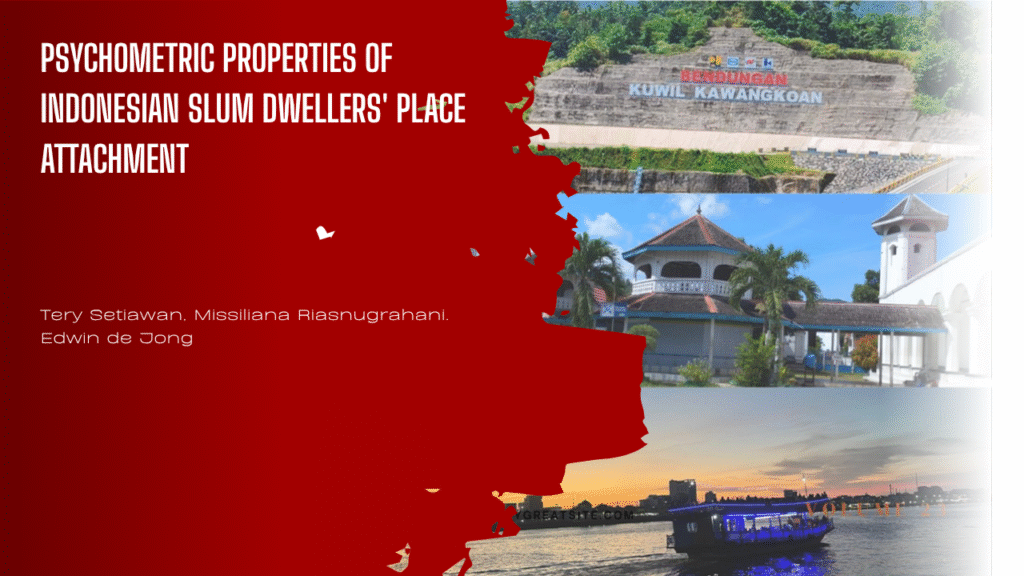Abstrak
Social scientists have long considered place attachment to be an important factor in promoting environmentally
sustainable behaviours among individuals. Raymond and colleagues have developed a five-factor place attachment
measure, comprising place dependence, nature dependence, place attachment, family bonding, and friendship bonding,
that encompasses most of the differentiations made and that has been amply tested for validity and reliability.
However, the bulk of these confirmatory studies have been conducted in Western societies, neglecting people in
the Global South and particularly people living in unstable, environmentally fragile regions such as slum areas.
This study aims to fill this omission by testing the psychometric
qualities of the five-factor place attachment measure in Indonesian slums using a dataset collected by the
Resilient Indonesian Slums Envisioned (RISE) project. The dataset consists of a random sample of 700 respondents,
living in slum areas of the cities of Bima, Manado, and Pontianak.
We split the dataset into two and run factor analyses in
EFA and
CFA
(N = 375) modes. Most notably, our results suggest a four-factor scale, in which place and nature
dependences are merged into a single dimension. This finding seems logical considering that those living in urban
slums are likely to have their natural surroundings, such as a river and its banks, as part of their living space.
Overall, our study extends the use of place attachment to disaster-prone slum contexts that are often overlooked
and, thus, supports the line of research that promotes environmental sustainability among people especially
vulnerable to ecological changes.


